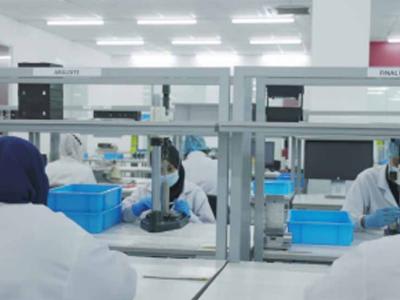This case study was originally published in our report,
The future of medtech in Australia. Download the full report >>
Medical imaging leader Mach7 has developed through a mix of organic and inorganic growth. In 2016, a reverse merger with ASX-listed company 3DM brought Mach7 to the share market, which has been a sound growth platform.
Mach7 is an international business with customers across 16 countries. “This geographic diversity gave us traction through difficult global challenges like COVID,” he adds.
Looking ahead, Mach7 is focused on delivering organic growth and continuing to build its business. It’s well placed to meet modern requirements as the tech world transitions to cloud-focused and SaaS-based technology.
Overcoming hurdles
Like most businesses, talent management is a priority. As a software-only company, Mach7 has adapted to a modern workforce environment.
“Technology and new management techniques mean we have a fully-remote workforce,” says Lampron.
“Our ability to adapt and embrace this change has led to better employee engagement, better recruiting and lower attrition. The challenge has been how to embrace this change, while still building and maintaining a strong company culture,” he adds. Lampron says company values are an important business driver. “We have established trust with our workforce by staying true to those values and supporting our employees as the world transitions to a new working environment. That trust, and ensuring our values are lived every day, has given us the ability to overcome the industry’s biggest challenge, which we believe to be employee engagement.”
Embracing growth
As Mach7’s book of business has grown, so has the size and complexity of its customers. “The biggest challenge for us has been increasing the service and supportability of our products. This comes through innovation in our product, better processes and increasing the number of staff required to deploy and support our software,” says Lampron.
“This starts at the top, by making sure we have the right leadership team. It filters down the organisational chart to ensure we have the right people in the right roles, so we can responsibly scale.” Data and data management have become increasingly key to Mach7’s success.
There are two main areas where data guides operations:
- within the ERP system for the accounting/finance team and
- in the CRM as a commercial tool.
“We have made major investments in these tools over the past 18 months. It was a challenging process to find the right vendors for our business. But we are now coming out the other side of those deployments. These systems and the tools they provide make it much easier for us to use our data,” Lampron says.
“I’m thankful we have fully-implemented systems that can help us develop the business from this point forward,” he says.
On the horizon
Demand for Mach7’s technologies will only grow as medical imaging becomes an increasingly critical component of the healthcare spectrum. “Most developed countries have adopted digital medical imaging. So now the emphasis is on making the process better and giving the industry the tools they need for big data and telemedicine,”
says Lampron. “Although every region is growing at a different rate, there is no doubt medtech as a whole continues to evolve and companies and investors are continue to fund this space.”
When it comes to RSM Australia’s support, Lampron notes the business is all about transparency.







